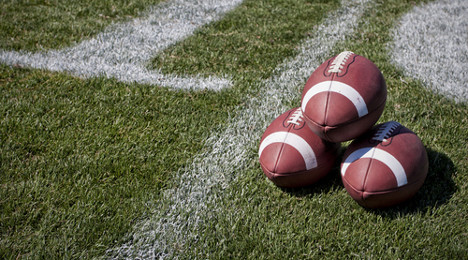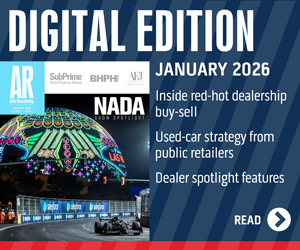Alfa Romeo spikes in football advertising

By subscribing, you agree to receive communications from Auto Remarketing and our partners in accordance with our Privacy Policy. We may share your information with select partners and sponsors who may contact you about their products and services. You may unsubscribe at any time.
CARY, N.C. –
Did you punch in the search term “Alfa Romeo” during Sunday night’s Super Bowl?
If so, you probably weren’t alone.
Online traffic for the Italian car brand — one of nine automakers to air ads during the game, according to Cars.com — skyrocketed, say analyses released Monday.
There was a 1,179-percent spike in visits to Alfa Romeo pages on Cars.com in the eight minutes after the car brand’s Super Bowl ad (versus the same time period before the spot), Cars.com said in a news release.
Meanwhile, the model page on Cars.com for the Alfa Romeo Giulia showed a 7,320-percent increase in traffic compared to the previous four Sundays. The next closest was the Audi S5 with a 1,391-percent hike.
In commments provided by Cox Automotive, Dealer.com director of digital marketing Andy MacLeay said: “FCA played aggressive offense with Alfa’s re-launch to the U.S. market, putting up three dedicated spots that were likely a first introduction to the brand for many younger Americans.
Subscribe to Auto Remarketing to stay informed and stay ahead.
By subscribing, you agree to receive communications from Auto Remarketing and our partners in accordance with our Privacy Policy. We may share your information with select partners and sponsors who may contact you about their products and services. You may unsubscribe at any time.
“Traffic spikes on both Google and the Dealer.com network showed the ads were effective in driving interest for the brand. Great comeback for Alfa Romeo as a brand, in what turned out to be the greatest comeback game in Super Bowl history.”
Edmunds said in an analysis that Alfa Romeo was the big winner on a brand level.
Its traffic on Edmunds climbed 785 percent throughout the game, the site said. On the model level, traffic to the Giulia page at Edmunds was up 802 percent, good for third place behind the Lexus LC (up 1,710 percent) and the Kia Niro (up 869 percent).
“Using the Super Bowl to generate awareness for a new brand or product is a tried-and-true advertising tactic, and this year proved it still works,” Jessica Caldwell, executive director of industry analysis for Edmunds, said in a news release.
“If you think about what it takes for someone to look away from an exciting game or halftime show to go online and research something, odds are it’s because it’s something they’ve never heard of and they’re compelled to find out more,” she said. “These ads could have been the first time many consumers saw models like the LC or the Niro, and Alfa Romeo is still a very new brand to many in the U.S.”
Behind the Alfa Romeo on the list of auto brands with biggest Super Bowl lifts on the Edmunds site were Kia (up 63 percent), Mercedes-Benz (up 9 percent) and Lexus (up 8 percent).
Edmunds points out that some brands didn’t see full-game spikes, but did realize immediate jumps when their ads aired; the Honda CR-V, for instance, had a 6-percent increase after its second-quarter ad, with the brand’s traffic showing a 14-percent bump.
Point is, all is not necessarily lost for a brand just because full-game traffic doesn’t rise meteorically.
“It’s harder for the volume brands to show large lifts in traffic because they’re working off of such a high baseline. Even minor gains are a victory, as those small percentage points represent a high number of shoppers expressing interest,” Caldwell said.
“Despite the fact that many marketers are shifting their media spend away from traditional TV, the big game still proves to be an effective way for automakers to grab the attention of car shoppers,” she said.
And that attention often is being driven to the smartphone, according to Cars.com.
Close to 60 percent of its visits were on mobile devices on Super Sunday, data strategy manager David Greene said in a news release.
“Because of the sheer audience size, the Big Game continues to be an effective advertising method, however, when paired with online digital support, the impact is even greater,” Greene said. “On mobile alone, there was a 1,074-percent increase to brand model pages advertised during the game.”
(Cars.com said it gathered internal data in real-time and compared it to site visits from the previous four Sundays.)
Turning to the Cox Automotive sites, as far as immediate impact, shopping activity on the Autotrader website for the Alfa Romeo brand (all searches) was up 3,811 percent the hour after the ad ran (compared to an hour before the game), Cox Automotive said.
Meanwhile, research activity for the brand on the Kelley Blue Book site was up more than 5,000 percent (measured as a fuction of new-car visits during the ad run against the prior hour).
Both measures led all brands.
As for post-airtime traffic volume, Alfa Romeo ranked second on a brand level for shoppping activity behind Ford on Autotrader (measuring all searches), and third behind Honda and Ford on KBB.com (measuring just new-car visits).
Those were calculated from traffic volume the hour after commercial airtime. Alfa Romeo was calculated as an average of all three of its spots, and Ford was an average of each of its airtimes.
On a model level, the Giulia's three spots ranked Nos. 3-5 in terms of immediate impact for shopping activity on Autotrader behind the Lexus LC 500 and the Buick Cascada on Autorader (comparing all searches an hour after the ad ran versus an hour before the game).
They ranked Nos. 1-3 on KBB (measured as new-car visits the ad run hour versus the prior hour). The LC 500 is not yet available on KBB.
For post-airtime traffic, the second Giulia spot was No. 1 on Autotrader's shopping actvity ranking (all searches), with the third Giulia spot at No. 2 and the first Giulia spot at No. 4. For KBB activity (just new-car visits), the second Giulia spot was No. 1, with the third Giulia spot at No. 3 and the first Giulia spot at No. 5.
“Automotive advertising that focused on new models and aspirational models have traditionally done well in previous years, and this year was no exception,” said Rick Wainschel, vice president of customer analytics and insights for Autotrader and KBB, in comments provided by Cox Automotive.
“The models that were both new and aspirational — Lexus LC500 and Alfa Romeo Giulia — performed particularly well in generating online behavior.”


